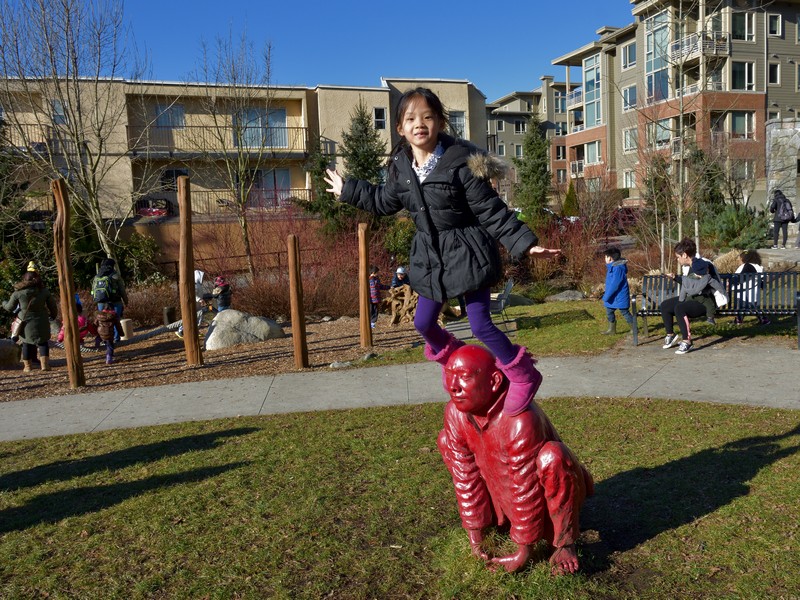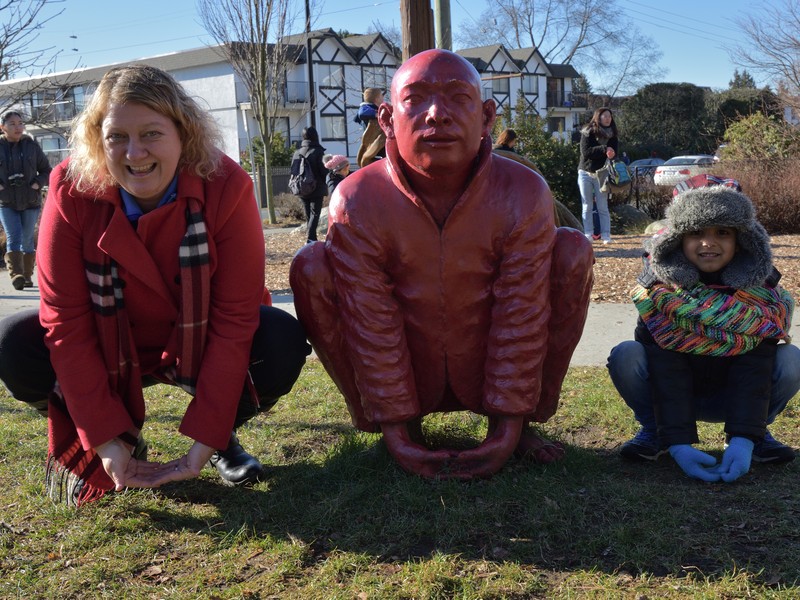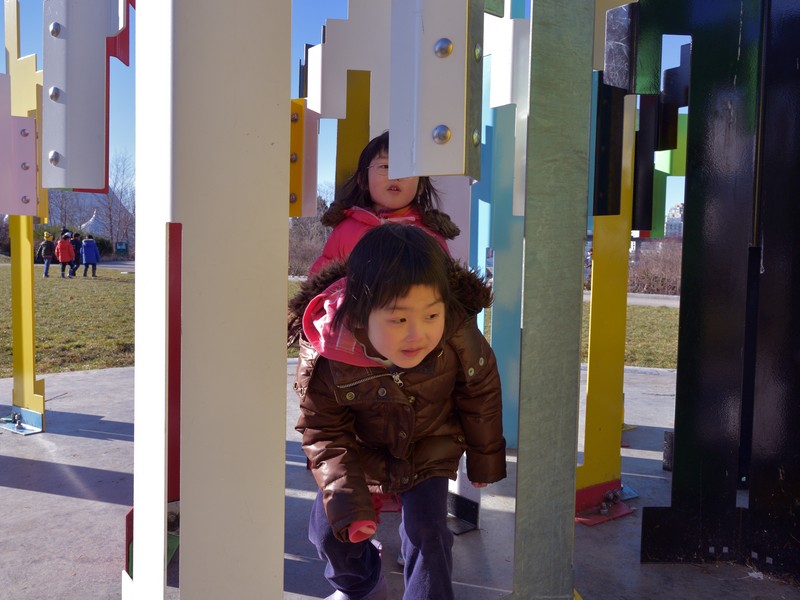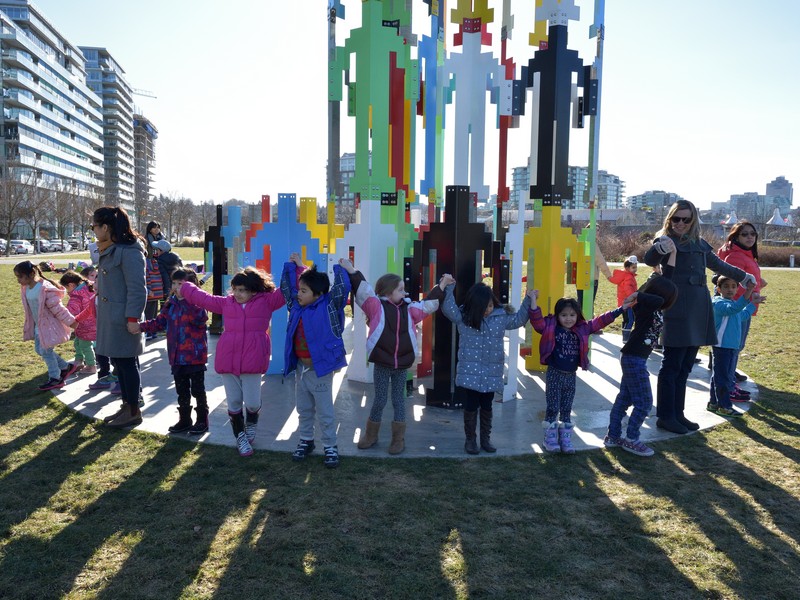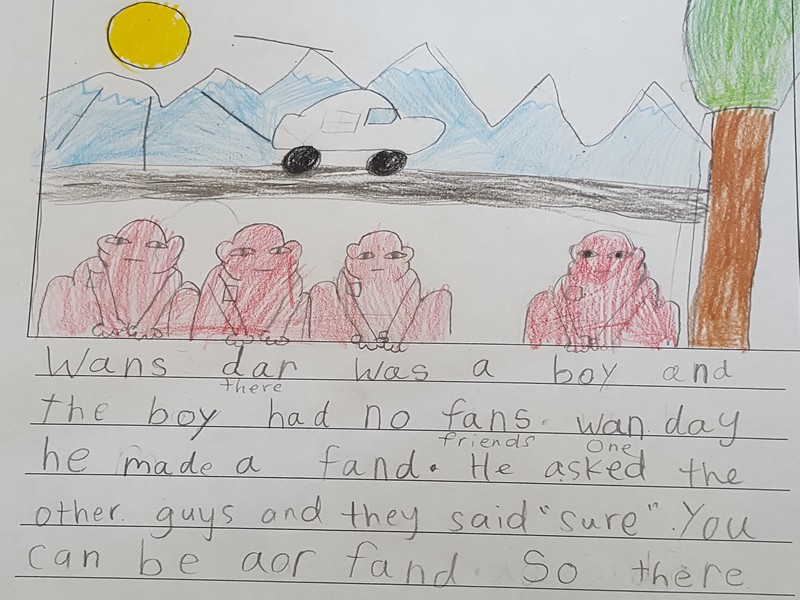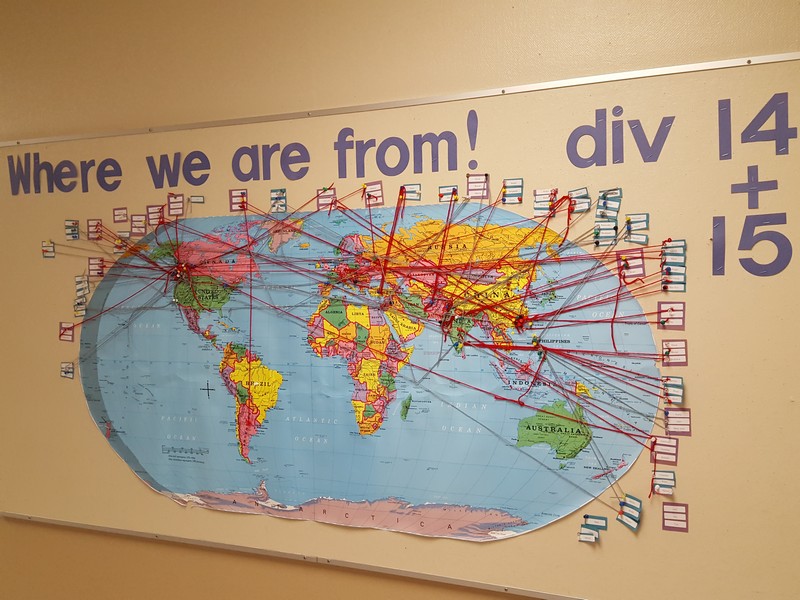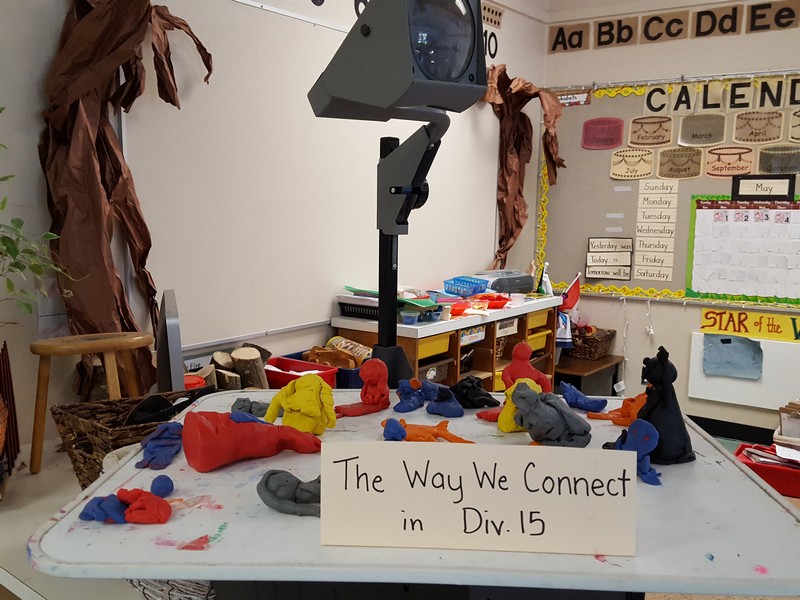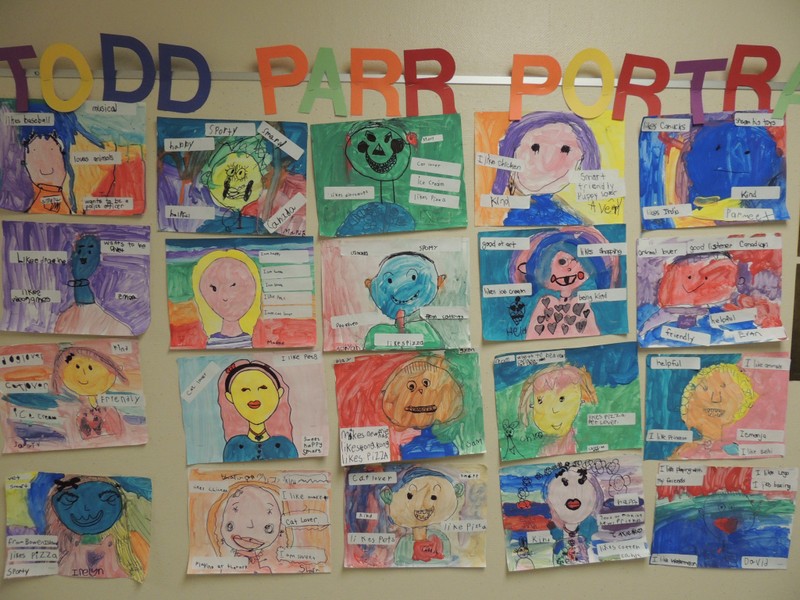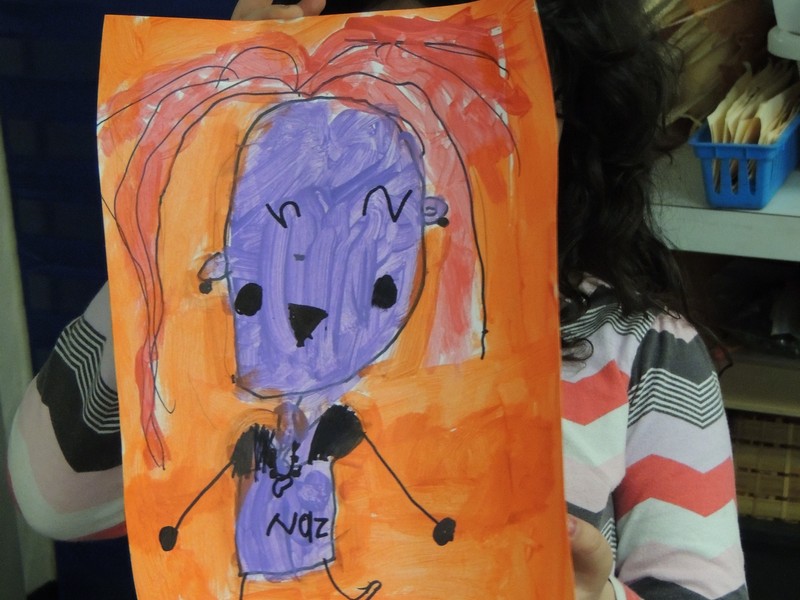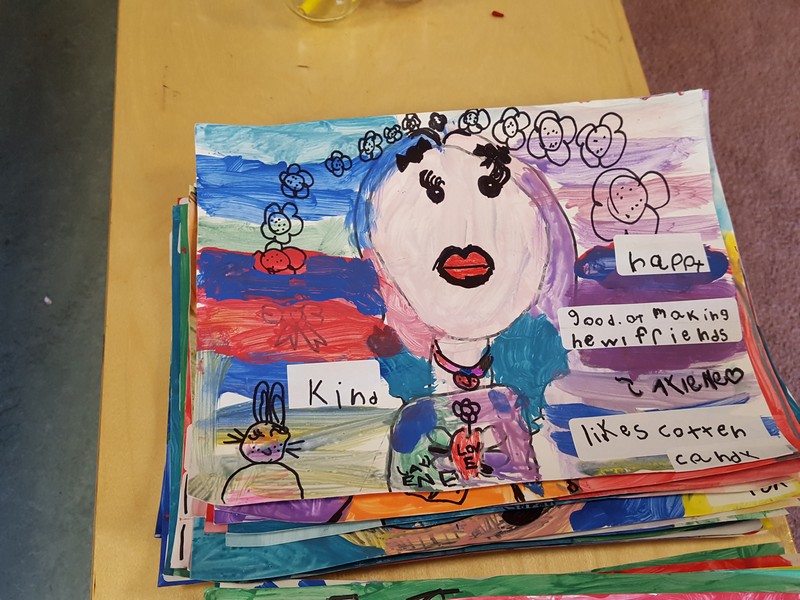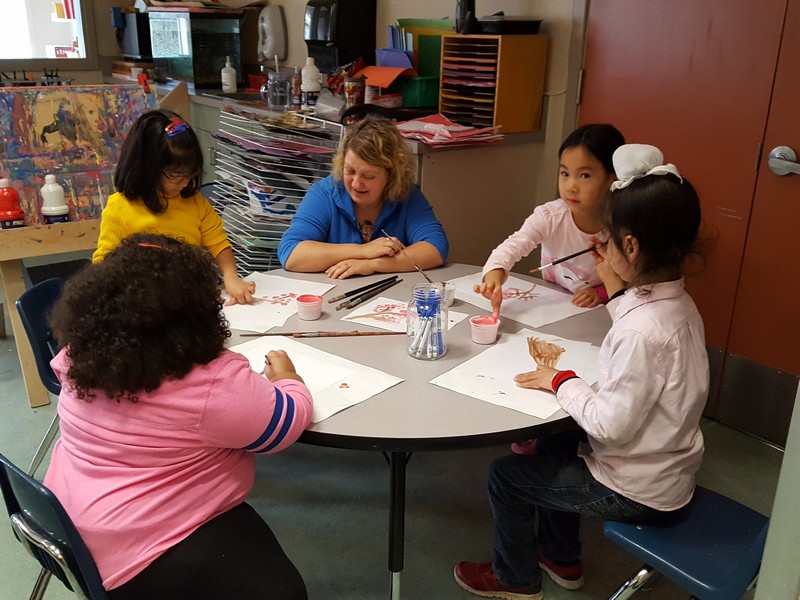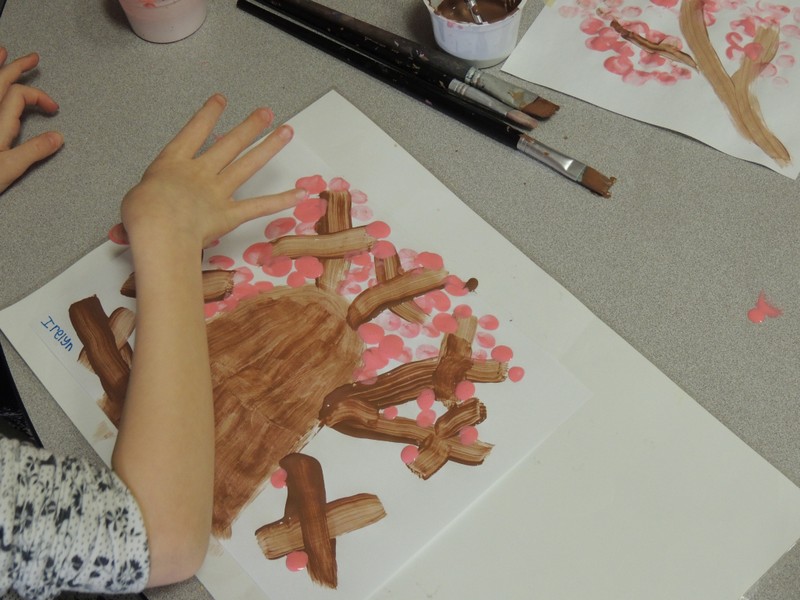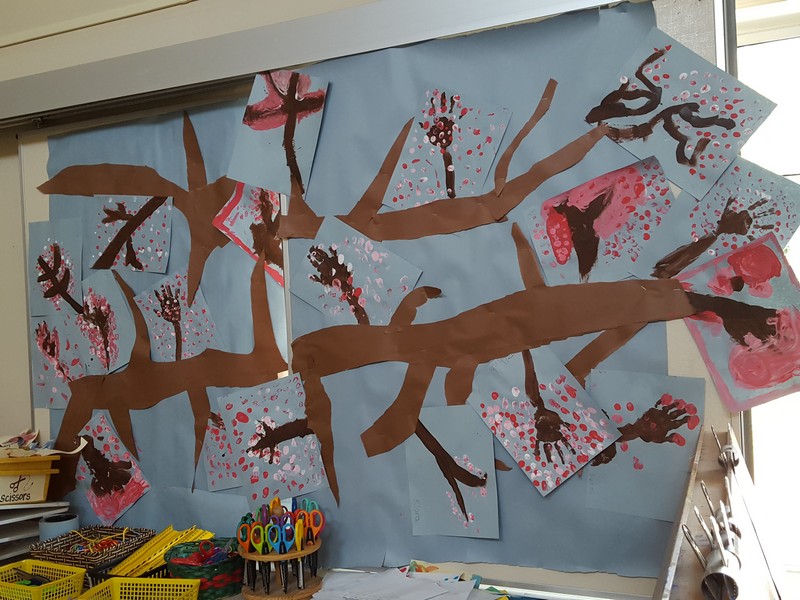Mitchell Elementary: My Story, Our Story
Arts Education, Language Arts, Physical Education, Science
School: Mitchell Elementary School
Teacher: Samatha Lau, Kim Dunnigan
Artist Collaborators: Lori Sherritt-Fleming
Class: Kindergarten, Grade 1
Overview
Through drama and visual arts, students explored their personal stories and traditions. While viewing and experiencing each other’s stories, students developed an understanding of commonalities and connections between each other’s stories in order to build a healthy and caring community. Due to the younger age of the students, (Kindergarten) rather than focus on a single art form for student expression, the project exposed the learners to a variety of art forms as a means of exploring both their individual an collective identities and communities. The art-infused learning sessions included drama, dance, poetry/creative writing, visual art and photography.
Connection to the Vancouver Biennale Exhibition
The Meeting by Wang Shugang
This piece is highly symbolic of the artist’s own cultural background and social/political experience. It offers a starting point to discuss how artists express their own identity and story through art. In addition, it encourages the students to talk about how art and story affect our own understanding of other people. The Meeting offers a springboard to explore the kind of art and story that we want to communicate to others, and the affect that we could have on others.
Human Structures Vancouver by Jonathan Borofsky
After exploring personal stories and identities, this piece extends the exploration to how our individual stories can help us form connections with others. Through these connections and understandings, the piece inspires thinking on creation of a collective identity. This sparks discussions about the value of these connections and of our own collective identity as it relates to the larger community.
BIG IDEAS
Kindergarten- Social Studies:
Stories and traditions about ourselves and our families reflect who we are and where we are from.
Our communities are diverse and made of individuals who have a lot in common.
Grade 1- Social Studies
Healthy communities recognize and respect the diversity of individuals and care for the local environment.
Guiding Questions
What is your story and the story of your family?
Why is it important to know our own story?
How are the stories in our class similar and different?
Why is it important to understand other people’s story?
Cross-Curricular Access
Applied Skills: Students built structures collectively, or build structures to represent the strength of community.
Arts Education: Students reflected on and interpreted the Vancouver Biennale works of art (The Meeting and Human Structures Vancouver) and use them as inspiration for inquiry.
Students explored drama and visual arts to express who they are as individuals and community. Students connected with one another through the sharing of ideas expressed through the arts.
English Language Arts: Students explored their own stories, and the stories of their families. They practiced listening to one another, and speaking to one another through sharing their stories in pictures and words. They created poetry to express their family cultures.
Physical Education: Students played cooperative games to build relationships and work together in a community. By identifying the fragile balance between individual and common needs, they became more collaborative.
Science: Students studied the seasons and understand how their traditions related to the changes of the seasons. They identified commonalities between the impact of climate and seasons on their own stories and on the stories of others.
Learning Process/Inquiry Challenges
In Mitchell’s multi-ethnic, inner city K-1 classrooms, the teachers make every effort to cultivate an open-minded learning culture by conscientiously using language that embraces mistake-making, risk-taking, kindness, and celebration of uniqueness and individuality. Teachers avoid binaries of right and wrong in the classroom and rather try to encourage discussion about the process of thinking and reasoning.
In order to foster student engagement, lessons often begin as questions that tap into students’ interests or previous experience. A variety of mediums to engage and communicate information (music, movement, visuals, video, verbal, written) are used. In addition, most of the activities done in the classroom are structured in ‘centers’ format where students are offered a lot of choice and given the opportunity to make independent decisions about their learning process. Finally, we often reflect on the students’ learning experience in order to further engage and challenge them and to consolidate their learning so that they become transferable to future contexts.
Stories and traditions about ourselves and our families reflect who we are and where we are from. In this study, students worked to identify their stories, discover where stories can be found, and how stories are created. Students uncovered their own stories, and shared them with the class. Students experienced the stories of others, and see the connections that can be made with the stories of others.
• What is a story?
-Author study: Eric Carle
• What are traditions?
Students brought in an artifact/treasure to explain a tradition in their home or family. Students will share something that is part of their holiday celebrations.
Students created poems based on a “I am from …” template.
• What is your family’s story?
Students interviewed parents or extended family members to find out about family history. A mapping activity of family origins created a collective map of where students in the class have come from.
• How do artists share their stories?
-Field study: The Meeting
-Artist study: Eric Carle
-Guest speakers shared an artifact or art piece that reflects their own stories. Guests included: other teachers and administrators, parents, a professional author, and an Indigenous storyteller
• When experiencing an artist’s story, what does it change in ourselves?
-Students looked at a variety of texts and media to make comparisons about the effects of art on audience, including how artistic techniques, like colour, can impact others.
-Students were encouraged to reflect on what is similar and what is different between another’s story and their own.
• How can you share your story?
-Students made personal posters, skits, masks, oral storytelling as media to share their stories.
• What do you want others to know? To feel? Which stories do we share?
-Students considered what important message(s) they wish to share with others. There messages were posted around the room in a gallery style. Students created an artist/author/performer biography that explains who they are and what they value and celebrate as individuals.
-Students reflected on whether or not all stories should be shared, or whether some are sacred and private. (see First Peoples’ Principles of Learning)
• How are our stories connected?
-Students experienced the stories of others, and uncovered the commonalities between them. Through the Biennale activities, students also created shared experiences in the classroom and reflected upon them, especially upon how these experience connect them to one another.
• Why is it important to understand other people’s stories?
-Field study: Human Structures Vancouver
-Students reflected on how understanding and connecting with other people’s stories makes them feel. From these reflections, the students also discussed how these connections affects the way we see each other and treat each other.
Student Creation
Students thought about who they were and what they bring to their communities, read books by Todd Parr, and then designed and painted their own portraits. Afterwards, they brainstormed words that expressed who they are and pasted them around their portrait and “Ta-Da!” Todd Parr Portrait Poetry! Students can visually view the similarities and differences in these two classes and inquire through the questions of what connects us and what makes us unique.
In hopes that spring will soon arrive (March, 2017), a tree was used as a metaphor for how we are all connected. In this case, students used paint to draw a branch (or created one using an impression of their own arm and hand) and then used their own fingerprints to create the blossoms.
Students collectively and individually wrote poems about how colour made them feel. Students painted Todd Parr style portraits of themselves then added words that described them, fusing them together to create Todd Parr Portrait Poetry which was displayed in the hallway.
Students participated in drama and dance workshops prior to the field trip. They learned about tableau, frozen poses and what our body language communicates. They created short dance and drama pieces that highlighted community and connection.
To celebrate spring, our communal roots and our uniqueness, the students created classroom installations. Each student created an individual piece of fingerprint art. The idea was that everyone would make their own cherry blossom branch, then add it to the classroom tree. These beautiful trees and symbolized how everyone is unique but all connected by the same trunk and roots and affected by the same ‘conditions’.
Finally, the students learned about photography and how to frame photos. Students worked with the idea of places we connect and, using i-pads worked in teams to take photos that illustrated this connection.
Reflection
Artist – Lori Sherritt-Fleming
Everything I needed to know I learned in Kindergarten. To play, to inquire, to engage, to listen, to share, to be open to new ideas, to get along with others and to create without borders or restrictions. I worked with a group of K/1 students at Mitchell Elementary on a Vancouver Biennale Project that explored identity.
While viewing and experiencing each other’s stories and traditions, we developed an understanding of our commonalities and connection, thus building a healthier and more caring community. One week we ‘played’ with colour and noted how it made us feel, what it made us think of and what it might mean in different places.
Students played some drama games and went to different sensory tables with different coloured objects on them and were invited to play with them. Some made dragons under a red bathrobe, some pretended to be feeling fish scales on an ornament, some commented these remind me of jewelry that my mom wears. Afterwards they wrote poems. Below is a sample. I am always so impressed that K’s and grade 1’s are so expressive with language.
Blue.
Reminds me of swimming.
Makes me feel calm.
Blue can mean sadness.
If I see it in the sky, I feel happy.
If I see it in the pool, I’m ready to play!
Blue.
Ms. Lau did a particularly great exercise with them. She put objects on a table, some connected, some not. Then she shook the table. The single ones broke or fell, while the connected ones stood or remained together. The lesson, we are all stronger when we are connected.
We visited the Biennale installations: The Meeting by Wang Shugang and Human Structures Vancouver by Jonathan Borofsky. What did we do? We played, we interacted, we ran, we touched, we ducked down and ran under things, stood on the shoulders of statues and discovered both the art in public places and the artists in ourselves. We connected.
It is tremendous fun to work with energetic and expressive kindergartens and grade ones! These past few weeks, I have gotten to roll up my sleeves, don my painting clothes and paint with passion in bright, primary colours (pun intended). I even experienced creating art ‘installations’ where I helped to design where and how the artwork would be displayed.
Art is not simply art…it crosses borders and opens boxes in the mind that cross into other areas of curriculum, that help us to develop as communicators, that provide opportunities to explore who we are.
Exploring identity, inclusiveness and community were themes we worked with at Mitchell. The process was engaging, messy and extremely satisfying! Students thought about who they were and what they brought to their communities, read some Todd Parr books and then designed and painted their own portraits. Afterwards, they brainstormed words that expressed who they were and pasted them around their portrait and “Ta-Da!” Todd Parr Portrait Poetry!
We also used a tree as a metaphor for how we are all connected. In this case, students used paint to draw a branch (or created one using an impression of their own arm and hand) and then used their own fingerprints to create the blossoms. Personally, I love the idea of sharing roots and a strong trunk of values, but, still connected to those roots and that trunk, being able to express individuality, while contributing to a ‘whole, beautiful picture’.
I have seen, through art, how nurturing a sense of individuality alongside a sense of community, has made these youngsters more tolerant, expressive and collaborative…recognizing that though we come from many different cultures and places, we all belong to one big, beautiful world.
It is tremendous fun to work with energetic and expressive kindergartens and grade ones, especially the ones participating in Vancouver Biennale’s Big Ideas project! These past few weeks in February and March, everyone has gotten to roll up the sleeves, put on painting clothes and paint with passion in bright, primary colours and experience creating art ‘installations’ to design where and how the artwork would be displayed.
Art is not simply art… it crosses borders and opens boxes in the mind that cross into other areas of curriculum, which help us to develop as communicators and provide opportunities to explore who we are.
Exploring identity, inclusiveness, and community have all been themes we have been working with at Mitchell. The process was engaging, messy, and extremely satisfying!
We used a tree as a metaphor for how we are all connected. Personally, I love the idea of sharing roots and a strong trunk of values while still being able to express individuality through the branches: all while contributing to a ‘whole, beautiful picture.’ I have seen, through art, how nurturing a sense of individuality alongside a sense of community, has made these youngsters more tolerant, expressive and collaborative. They have recognized that though we come from many different cultures and places, we all belong to one big, beautiful world.

